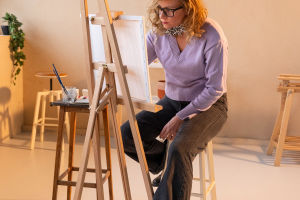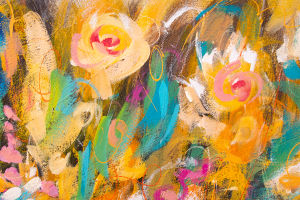Painting has been a powerful form of human expression for thousands of years. From ancient frescoes to contemporary digital canvases, the techniques used by artists have evolved dramatically.
Modern and traditional painting techniques each have unique strengths and challenges. Understanding these differences can deepen our appreciation of art and inspire artists in their creative journeys.
Have you ever wondered how modern methods stand against age-old practices? Let's explore this fascinating comparison.
Defining Traditional Painting Techniques
Traditional painting refers to classic methods developed over centuries, often involving natural materials such as oil, acrylic, or watercolor on canvas, wood, or paper. Techniques like layering, glazing, impasto, and blending are staples in traditional painting. Artists manually mix pigments and apply paint with brushes, palette knives, or even fingers.
This hands-on approach connects the artist physically and emotionally with the medium, fostering patience and mastery.
Exploring Modern Painting Techniques
Modern painting incorporates new materials, technologies, and creative philosophies. It often includes digital painting using software and tablets, spray painting, mixed media, and experimental methods that blur boundaries between art forms. Modern techniques emphasize innovation, immediacy, and breaking conventions.
For example, digital tools allow artists to undo mistakes instantly or work with layers in ways impossible on physical canvases. This flexibility encourages exploration and rapid iteration.
Materials and Tools: Old vs. New
Traditional painters use physical pigments, brushes, and supports that require preparation and maintenance. Natural pigments can have unique textures and color qualities but demand skillful handling. Modern artists may work with synthetic paints, digital screens, or unconventional materials like recycled objects and neon lights.
While traditional tools demand tactile precision, modern tools offer convenience and expanded creative possibilities.
Creative Processes and Artistic Freedom
Traditional painting often follows structured techniques learned through formal training. There is an emphasis on mastering foundational skills like perspective, anatomy, and color theory. This discipline nurtures craftsmanship but can feel limiting to some.
Modern painting celebrates freedom from rules, encouraging artists to experiment with form, color, and meaning. However, this freedom can also create challenges in maintaining coherence and depth in artwork.
Preservation and Longevity
Traditional paintings, when created with high-quality materials and cared for properly, can last for centuries, becoming cultural treasures. Their physical nature connects viewers to history and tradition. Modern digital art, however, faces issues of preservation as technology changes rapidly. Files may become inaccessible, and digital displays vary widely.
Some modern works integrate physical elements or print digital creations to combine longevity with innovation.
Audience Perception and Value
Art lovers often associate traditional painting with authenticity and heritage, valuing the visible evidence of an artist's hand. Modern painting attracts audiences interested in new ideas, social commentary, and immersive experiences. The market for each varies, and some collectors specialize in one or the other.
Both have cultural importance, and understanding their distinctions enriches the viewer's experience.
The Future of Painting: Bridging the Gap
Increasingly, artists blend traditional and modern techniques to create hybrid works. For instance, a painter may start with a traditional sketch, then add digital effects, or vice versa. This fusion offers exciting opportunities for creativity, allowing artists to respect tradition while embracing progress.
The future of painting may lie not in choosing sides but in weaving together the best of both worlds.
Conclusion: Your Perspective on Painting Techniques
Whether you favor the tactile depth of traditional painting or the innovative freedom of modern methods, both approaches offer valuable lessons. As art continues to evolve, these techniques challenge and inspire each other.
What painting style resonates most with you? Do you appreciate the precision of traditional art or the experimentation of modern creations? Share your thoughts—your perspective is part of this ongoing artistic dialogue.


